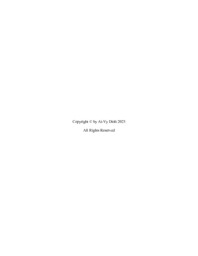
ATTENTION: The works hosted here are being migrated to a new repository that will consolidate resources, improve discoverability, and better show UTA's research impact on the global community. We will update authors as the migration progresses. Please see MavMatrix for more information.
Show simple item record
| dc.creator | Dinh, Ai-Vy | |
| dc.date.accessioned | 2023-07-05T17:36:24Z | |
| dc.date.available | 2023-07-05T17:36:24Z | |
| dc.date.created | 2023-05 | |
| dc.date.issued | 2023-06-30 | |
| dc.date.submitted | May 2023 | |
| dc.identifier.uri | http://hdl.handle.net/10106/31511 | |
| dc.description.abstract | The human gut microbiome is a community of microbes that are found in the gastrointestinal tract and serves many purposes to the human host, such as immune system regulation and food digestion. In adults, thousands of bacterial species may develop over time based on changes in diet, environment, and other factors. A dietary category of interest is that of prebiotics and probiotics, both of which are necessary for a healthy microbiome. Prebiotics aid microorganisms by acting as “food,” while probiotics are microorganisms themselves. A dataset was extracted from the National Center for Biotechnology Information that included abundant bacterial genera in a study involving prebiotics, probiotics, and antibiotics. Phyla were analyzed in terms of numerical changes and unique properties. Major changes in the abundant phyla, Firmicutes and Bacillota, could be inferred as a product of a modified diet. In previous studies, it was shown how these phyla could affect obesity-related metabolic diseases and gut health based on their quantities. This could provide implications on how the microbiome can influence a person’s overall health and how the microbiome can be altered. | |
| dc.format.mimetype | application/pdf | |
| dc.subject | Prebiotics | |
| dc.subject | Probiotics | |
| dc.subject | Antibiotics | |
| dc.subject | Gut | |
| dc.subject | Microbiome | |
| dc.title | EFFECTS OF PREBIOTICS, PROBIOTICS, AND ANTIBIOTICS ON THE HUMAN GUT MICROBIOME | |
| dc.type | Thesis | |
| dc.date.updated | 2023-07-05T17:36:24Z | |
| thesis.degree.discipline | Biology | |
| thesis.degree.grantor | The University of Texas at Arlington | |
| dc.type.material | text | |
Files in this item
- Name:
- DINH-THESISOPTION-2023.pdf
- Size:
- 558.5Kb
- Format:
- PDF
This item appears in the following Collection(s)
Show simple item record


